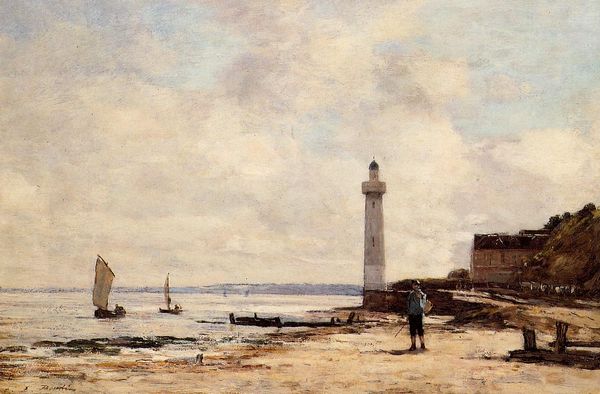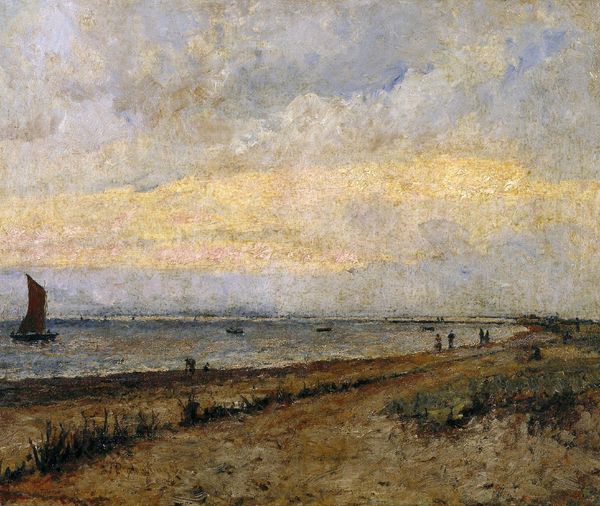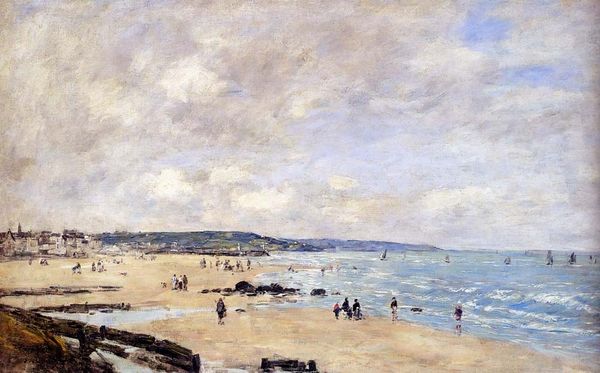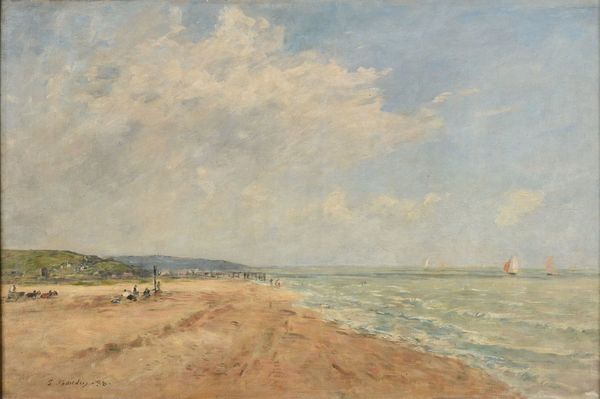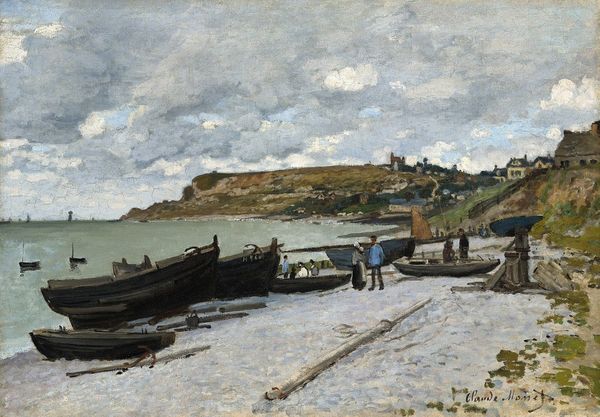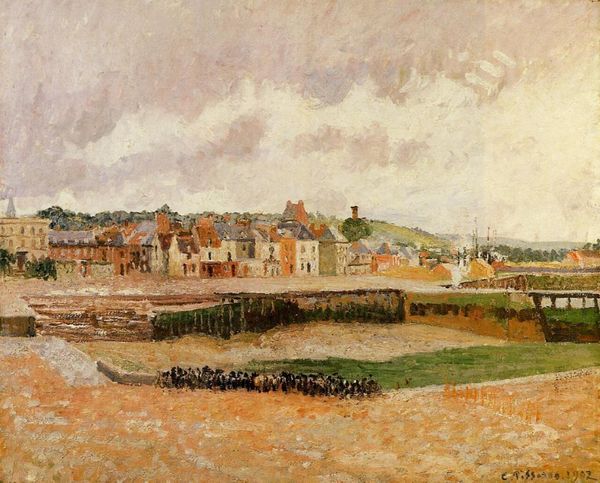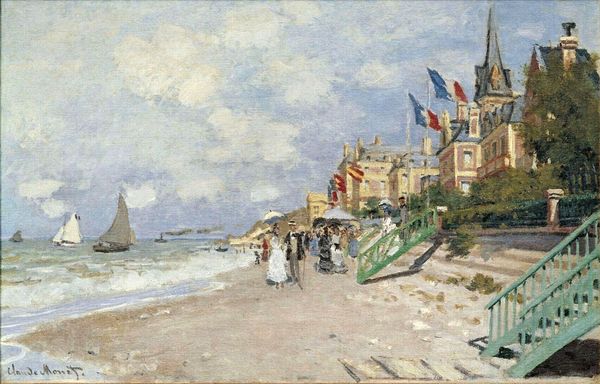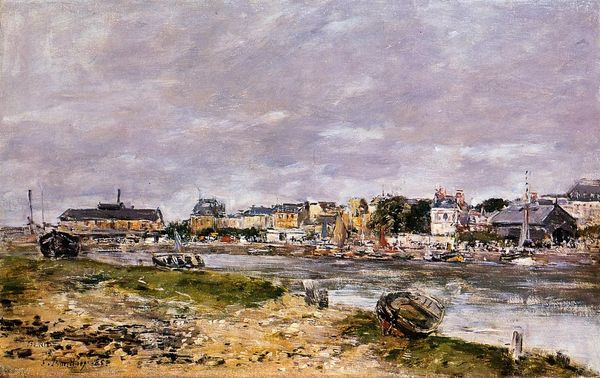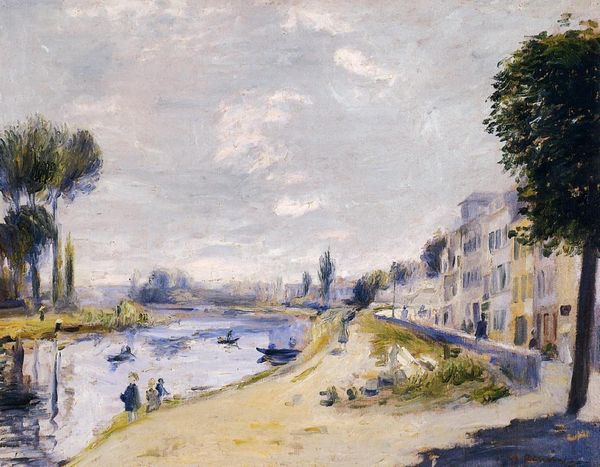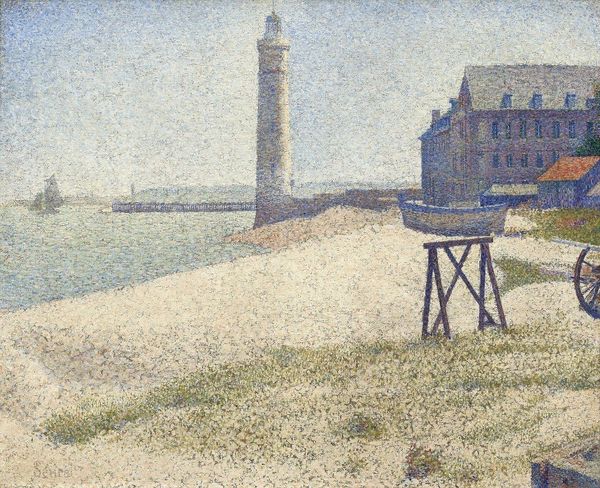
painting, plein-air, oil-paint
#
16_19th-century
#
painting
#
impressionism
#
plein-air
#
oil-paint
#
landscape
#
impressionist landscape
#
oil painting
#
cityscape
Dimensions: 39 x 50 cm
Copyright: Public domain
Curator: Pissarro's "Upper Norwood, Crystal Palace, London," created in 1870, offers a look at the changing landscape of Victorian England. The painting, primarily executed in oil on canvas using the plein-air technique, gives us an intimate portrayal of the era’s urban expansion. My immediate impression is how muted the colors are; they create a contemplative atmosphere. Editor: There is a deliberate social commentary subtly embedded in the landscape. Pissarro is capturing a specific moment when urban expansion and the rise of industrial infrastructure began to reshape British society. Curator: Absolutely. Let’s consider the labor required for the rapid construction during this period. Notice the raw materials; earth and stone transformed into roads, houses and monuments like the Crystal Palace, all built with the backs of the working class. The paint application, visible brushstrokes, further underscores the manual nature of the work, even in creating the painting itself. Editor: And how is that labor represented? Through implication and absence. There aren't legions of workers crowding the streets; instead, a quiet road bisects the painting, used by a small number of people. The painting elicits ideas about industrial growth through its visual absence. Who has access to leisure to appreciate that very vista, and who toils? Curator: It's interesting how Pissarro balances the man-made with the natural, wouldn’t you say? Fences border one side, while vegetation softens the lines of the rooftops, it provides a study of contrasts. Editor: Agreed, the choice to feature the Crystal Palace in the distance evokes reflections on empire, wealth, and technological progress and at what cost. Its impact ripples through all parts of society in a very physical sense. How laboring hands helped build an empire but also altered the city’s complexion and landscape in a meaningful way. Curator: Well said, considering all of this, one begins to appreciate Pissarro's process and how closely it mirrors the gradual transformations taking place around him. Each stroke seems carefully applied, mirroring how slowly our world evolved because of manufacturing, distribution and commercialized society. Editor: Indeed. Seeing through the lens of social change helps one realize that an otherwise typical landscape speaks volumes about the intersection of progress and privilege.
Comments
No comments
Be the first to comment and join the conversation on the ultimate creative platform.
